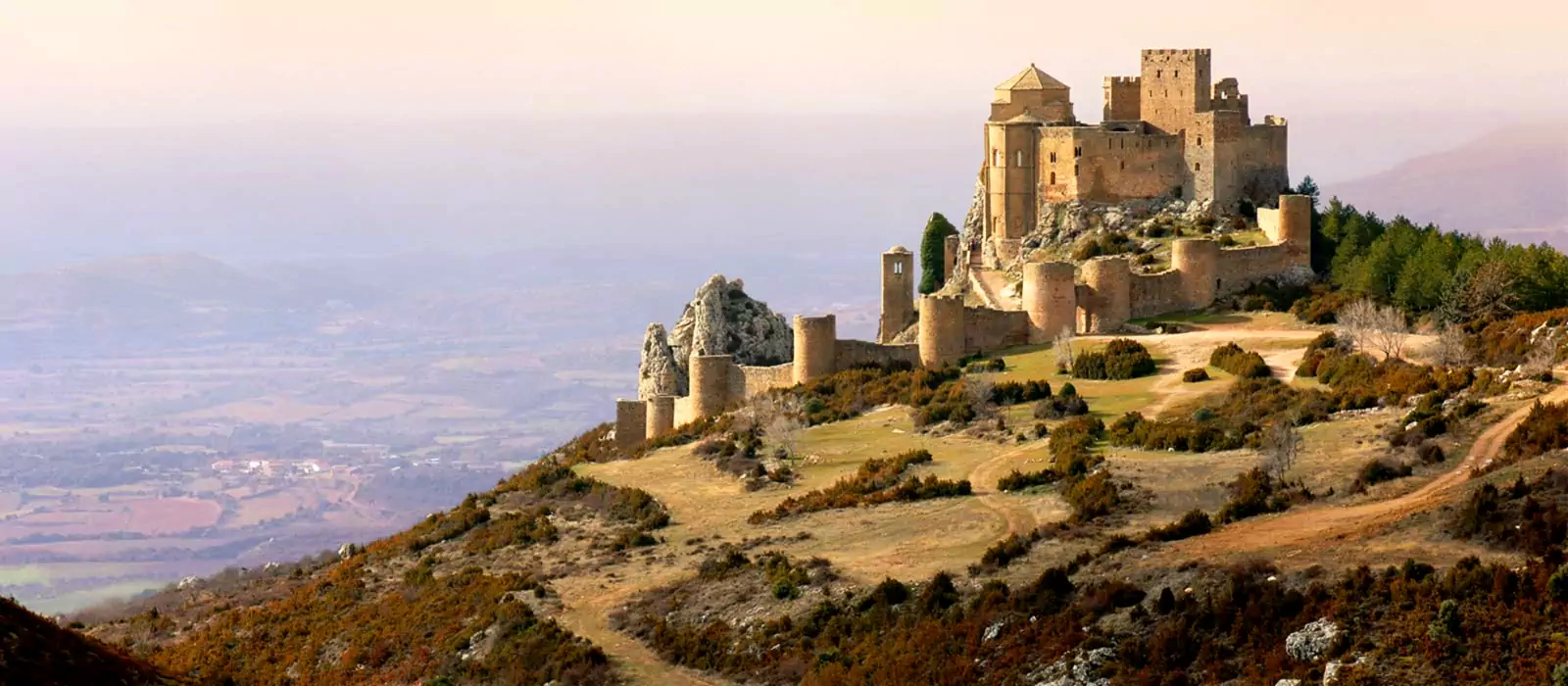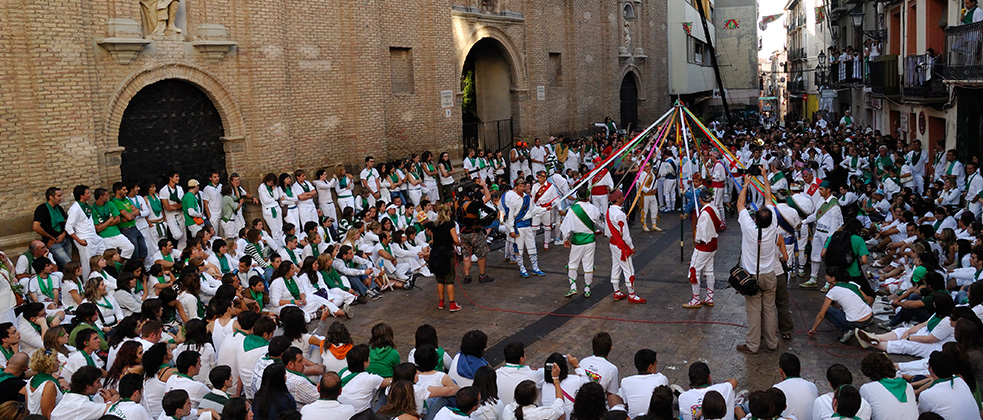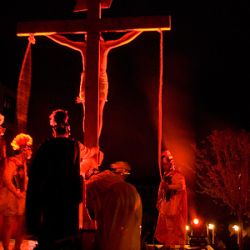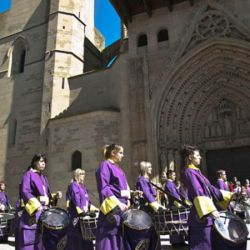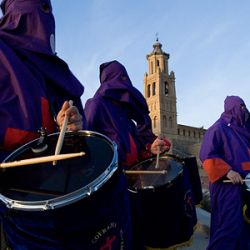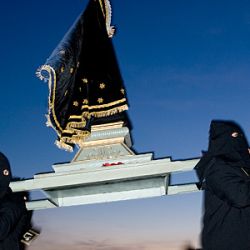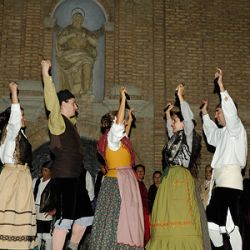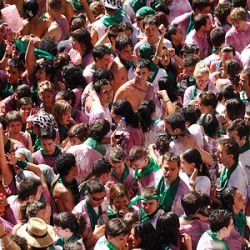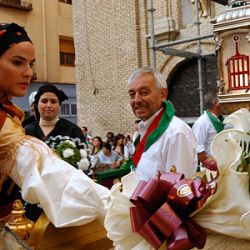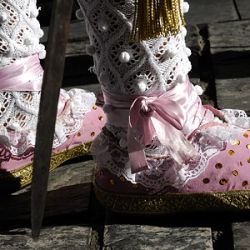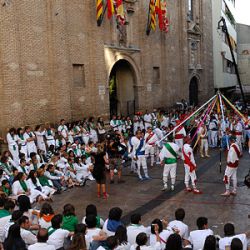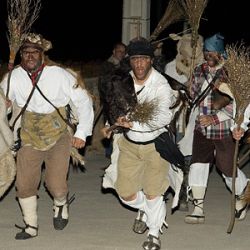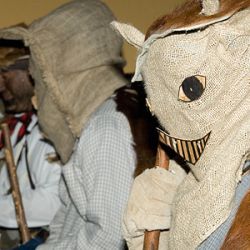Events, festivals and traditions
Easter
The arrival of Easter sees the villages in Hoya offering a wide range of activities. The typical brotherhoods with their drums and floats fill the streets of the capital throughout the week, to the great interest of the many tourists who come to visit.
Outside the capital, the highlights of other Aragon tourist attractions include the Rompida de la Hora at Almudévar, the Enclavación (nailing to the cross) at Ayerbe, the Procession of the Penitent at Siétamo, the Encounter in Bolea and the Tears of Our Lady in Alcalá de Gurrea. This is not to forget the different sights to visit throughout the year, such as the monuments to Easter at Bolea and Biscarrués; which are a form of architectural trompe l’oeil in the Baroque style, of which there are few remaining examples left complete in Aragon.
Spring festivals
PILGRIMAGE OF SAN JORGE
Held since medieval times, it is said that this saint appeared in the area at the Battle of Alcoraz (1096), when the Christians under Pedro I fought to take the city of Huesca from the Muslims. Thus, on April 23, people from the capital meet at this chapel in the south of the city; while other towns also have their own pilgrimages, e.g. at Tierz, Piracés, Novales and Chimillas.
PILGRIMAGE OF NUESTRA SEÑORA DE SALAS
The first Sunday in May
‘Huescans’ of all ages flock to celebrate this popular pilgrimage to the beautiful and important sanctuary located on the outskirts of the capital, in keeping with an ancient tradition of pilgrimage from the city to this first order Marian shrine.
PILGRIMAGE OF NUESTRA SEÑORA DE LORETO
This sanctuary is 3km from the city of Huesca and there are two pilgrimages. One is held every May Day, while the other, known as the “seven places”, traditionally involves people from Cuarte, Banariés, Huerrios, Alerre, Chimillas, Banastás and Yéqueda on the second Sunday in May.
Summer festival
NOCHE DE SAN JUAN IN CILLAS
Every year in the chapel of Cillas, in the small town of Igriés, a mass is held on June 24; which is followed by a procession to the fountain where the blessing of the waters takes place.
SAN LORENZO FESTIVAL (Huesca)
Declaradas de interés turístico nacional.
Dressed in white and green, the inhabitants of Huesca take to the streets to celebrate their festival. The launching of a rocket from the City Hall at 12.00pm on August 9 signals the start of seven days of festivities, finishing on the 15th.
The offering to the saint is one of the highlights of the festival. August 10th is the main day, when the Danzantes practise their ancient and beautiful dances with swords, sticks and tickertape; first, to the Basilica of San Lorenzo and then in procession through the city streets following the footsteps of the saint. On the last day of the festivities, August 15, people offer flowers and fruit in a highly folkloric display in traditional High Aragonese costumes. At night, the peñas, organised groups of friends and colleagues, say their farewell to San Lorenzo at the gates of the basilica, singing a song of lament for the end of the festivities.
DANCE OF GURREA DE GÁLLEGO
This is a hallmark of this town, and is believed to have arisen with the other dances of High Aragon in the sixteenth and seventeenth centuries. This tradition dances, handed down from generation to generation, have always been held, except in the years of the Civil War. The dance pieces form part of a representation of Moors and Christians, and simulate their fighting. The set consists of the Parade, the Habanera, the Crosses, the Trenzau, the Gurrea Waltz, the Mazurka and the Degollau. Previously, the Pastorada and the Dichos were performed; however, these were banned and have not been held since before the Civil War. The dance is held on September 8, in celebration of the Virgen de la Violada, before a pilgrimage to the shrine of la Violada on the last Sunday of that month.
http://danzantesdegurreadegallego.com/
Autumn festivals
ALL SAINTS AND ALL SOULS NIGHT
This festival is celebrated by everyone in the county. Formerly, young men would ring the church bells to frighten the souls from returning from the dead, while the children made illuminated skulls out of pumpkins to guide these wandering souls back to the world of the dead.
SAN MARTÍN
November also brings the feast of San Martín, which is still celebrated in this part of Huesca, as well as the towns of Tabernas, Yéqueda, Quinzano and Nueno.
Winter festivals
THE BONFIRE OF SAN FABIAN OF TIERZ
Towards January 20, a bonfire is lit in the middle of the afternoon from wood collected in the morning. The white smoke slowly brings the residents together. Formerly this was done in the streets, and there was a big rivalry to see who could have the best bonfire. Roast potatoes, sausages and ribs washed down with local wine enliven the atmosphere; while at midnight the fire turns to embers. Some take that as a signal to go home to bed, while others continue till they can take no more.
AGÜERO CARNIVAL
Also called the “Fiesta d’as Mascaretas”, this was revived recently, in 2008, after 50 years of not celebrating it. Many people join in this carnival, which features standard characters like “As Majas” and “Caracolero”, and even a ´stick man´ riding a donkey. Of course, everyone joins in the last dance, known as the “baile de mascaretas”.
Around the same time, there are numerous places where bonfires are lit in honour of other saints, such as San Sebastián and San Vicente, the latter in Huesca capital.





